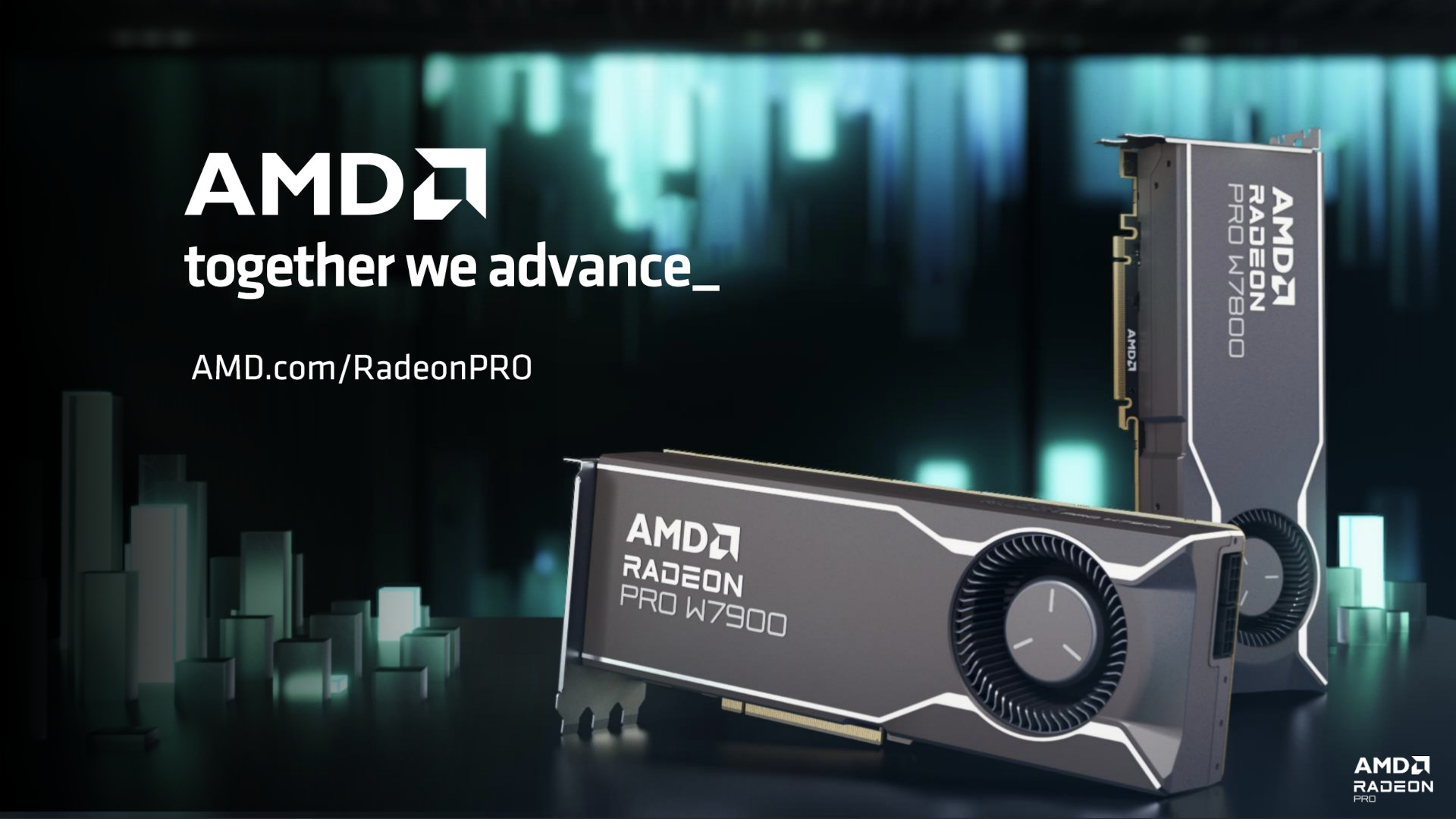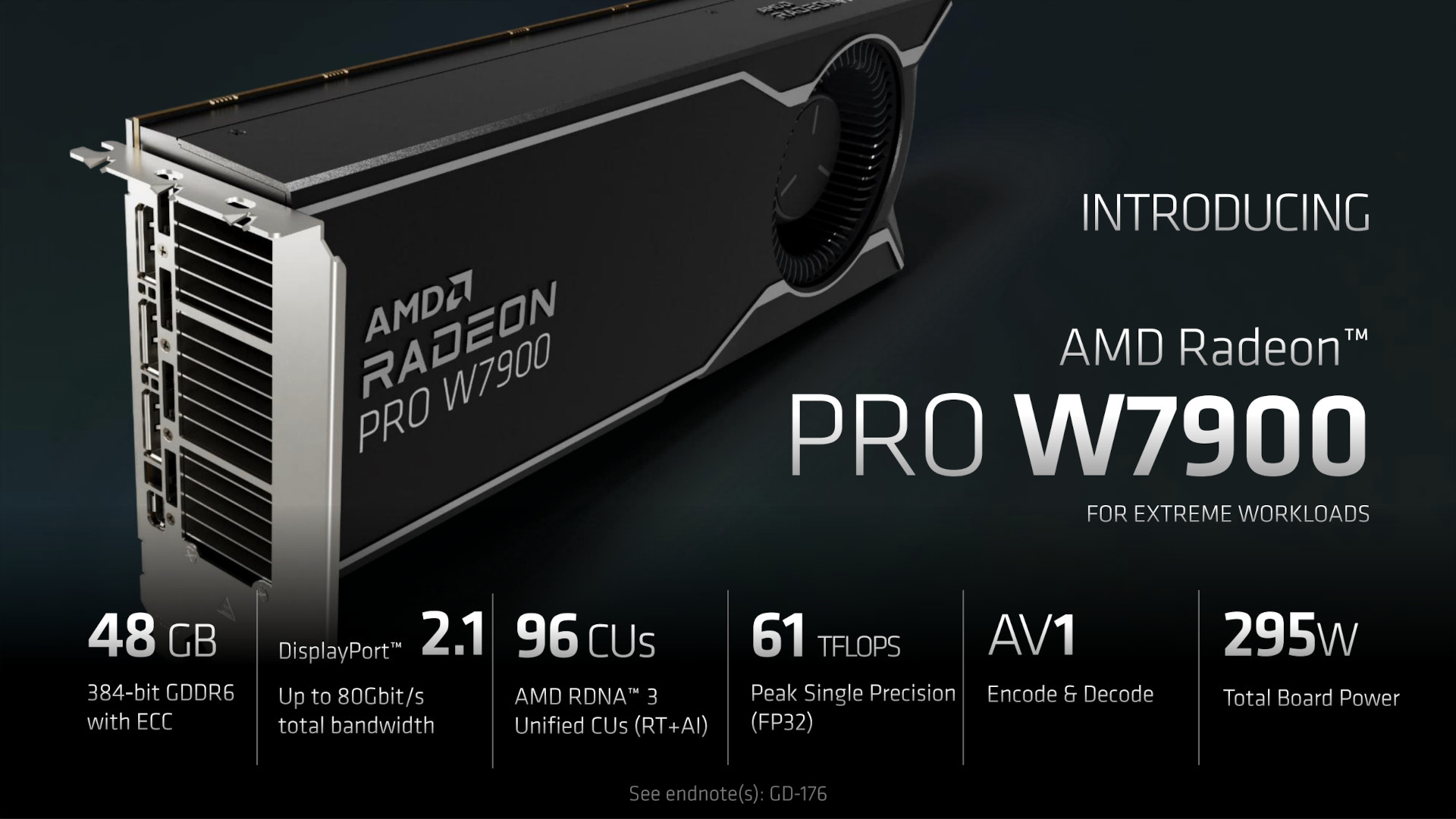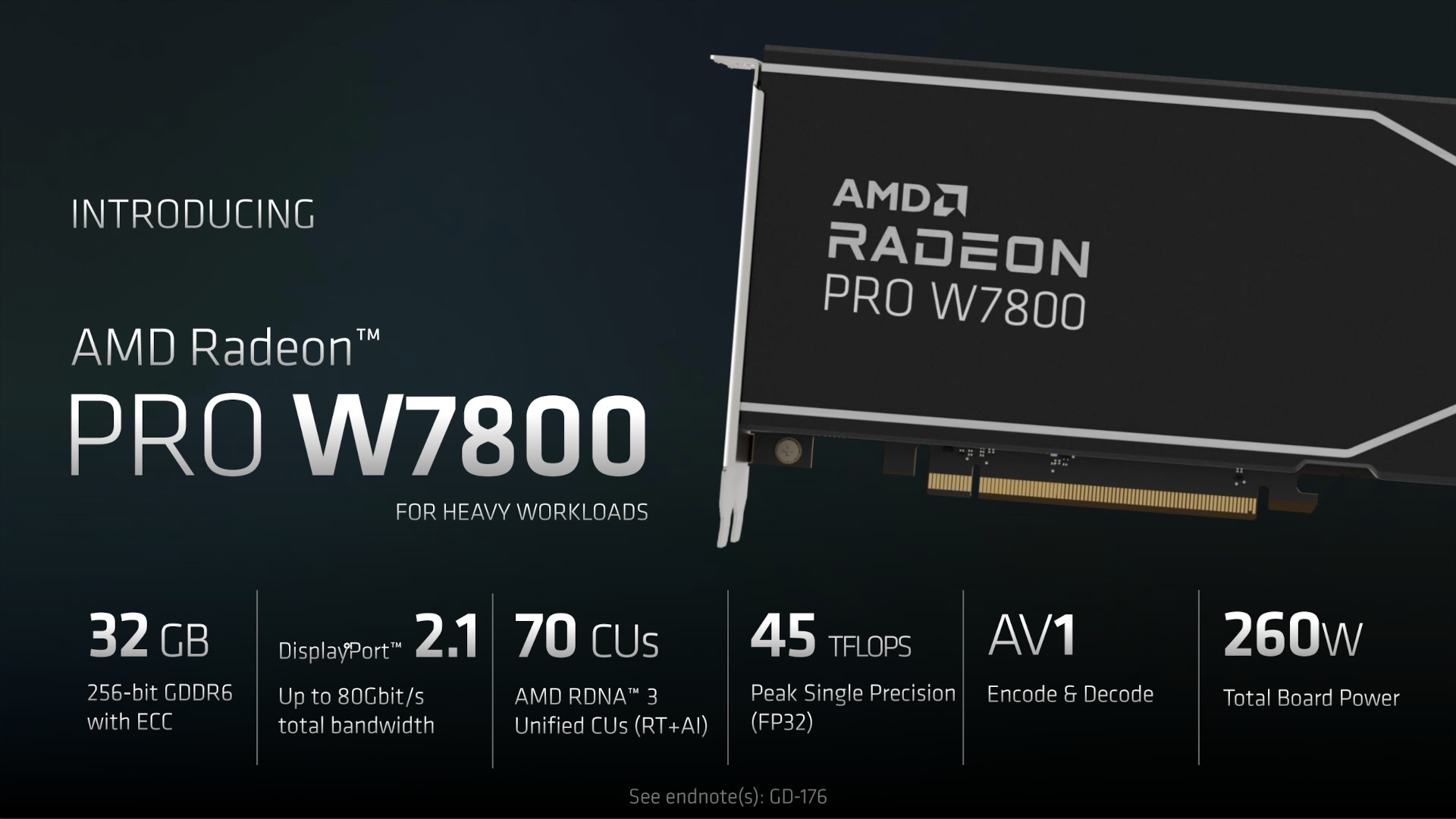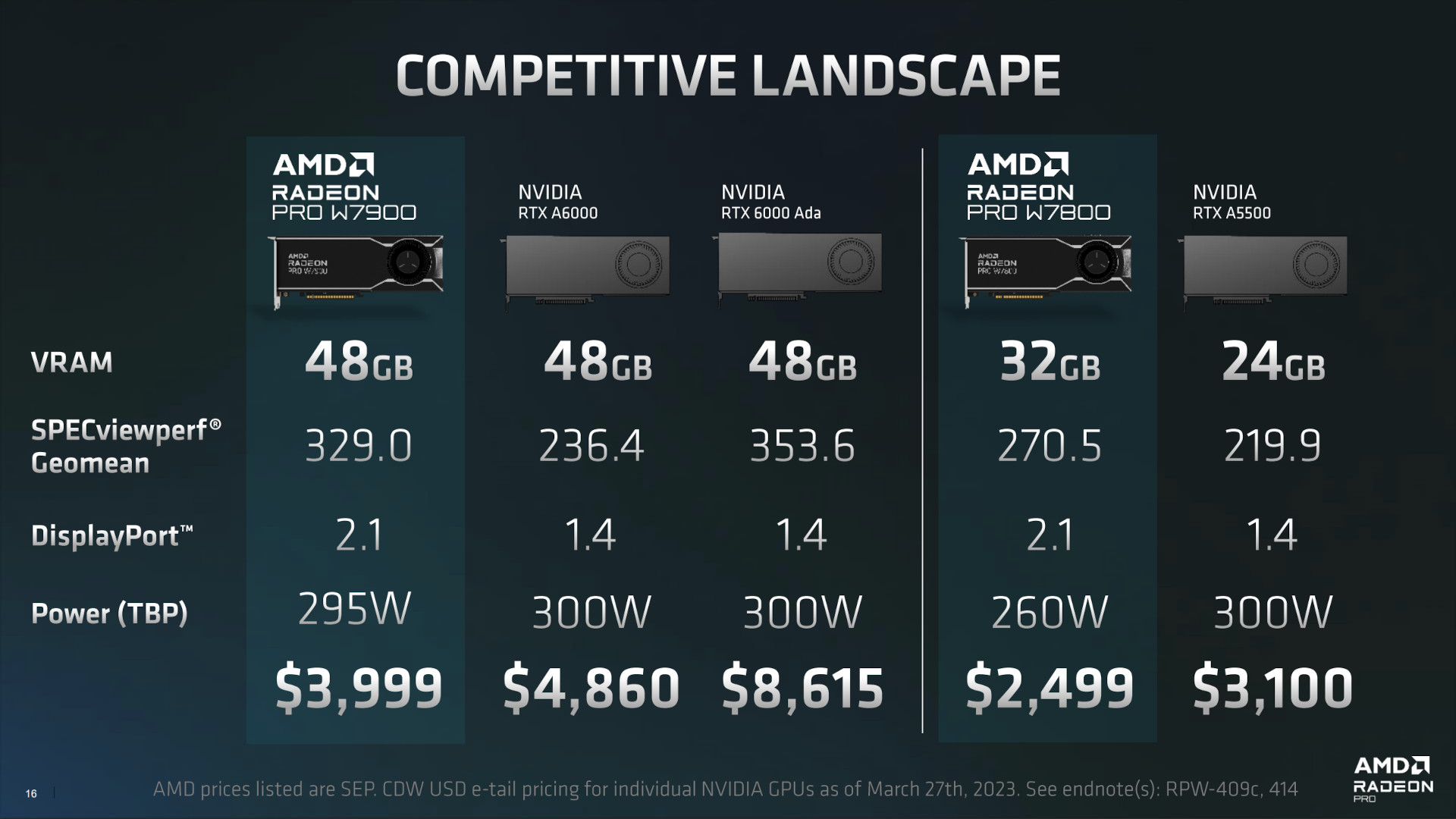AMD’s new Radeon PRO W7000 GPUs promise exceptional performance and value for pro creators
Head-to-head with NVIDIA's Ada, AMD goes all-in.

What you need to know
- AMD just announced its latest Radeon PRO W7000 series of workstation graphics cards designed for professionals in creative industries.
- The $3,999 PRO W7900 features 61 TFLOPs with 48GB of GDDR6 VRAM, and the $2,499 PRO W7800 45 TFLOPs with 32GB.
- Both cards will be available in Q2, 2023, with an upcoming demonstration planned for the NAB Show 2023 in Las Vegas from April 16 to 19.
AMD just unveiled its most powerful series of workstation graphics cards, building the new Radeon PRO W7000 series upon its RDNA 3 architecture, initially introduced with RX 7000 gaming GPUs and 2x faster than the previous RDNA2. Moving to a chiplet design reminiscent of Intel's big.LITTLE allows AMD to combine AI and raytracing accelerators with a new dual media engine, beneficial to professionals in the creative design industry reliant on workstation GPUs by significantly reducing high-quality render times.
Touting up to 1.5x gains over its previous generation of workstation cards, AMD also heavily emphasizes value for money with the new W7000 series, aiming to best rival NVIDIA in performance per dollar versus its A-series Ada GPUs. Two variants feature in the announcement: the Radeon PRO W7900 taking center stage with its premium specs and the PRO W7800 taking a more affordable stance without sacrificing impressive luxuries.


The Radeon PRO W7900 and W7800 combine their Radiance Display Engine with DisplayPort 2.1, the latest high-end audio/video standard, which can support an uncompressed 8K signal at 60Hz with HDR-10 support. Alternatively, with Display Stream Compression (DSC,) the PRO W7000 cards can push even higher to 8K120 for high frame rates or 12K60 for the extra resolution. Anyone creating professional-grade renders can finally see them on outrageously huge monitors without losing clarity, which I'm sure they'll appreciate.
Both cards also support AV1 encoding and decoding, the latest standard for ultra-high resolution video with wider color gamuts used in HDR material. Optimized for AMD Software: PRO Edition, the W7000 series can even push beyond the native resolution of whatever screen might be in use, dynamically adjusting the image to boost frame rates and overall performance without affecting quality. It's an across-the-board improvement for the industry, made possible partly by a tremendous 48GB and 32GB of GDDR6 VRAM on the PRO W900 and PRO W7800, respectively.

Working closely with leading industry software developers, AMD is determined to make its PRO W7000 series cards the best choice for critical media applications like Adobe After Effects and DaVinci Resolve, plus 3D rendering suits like 3ds Max, Maya, Cinema 4D, and even Unreal Engine. The RDNA 3 architecture promises to promote multitasking, saving users from effectively abandoning their machine while waiting for intensive renders to finish.
I couldn't do that (multi-tasking) before on my old NVIDIA-based system because once the GPU attacked the Lumion rendering, the rest of the system was basically just in 'shut down' mode.
Rob Terry, Senior Designer at Stantec
Industry-targeted graphics cards might seem like a niche to some. Still, advancements in this category can trickle down to consumer-grade GPUs, and healthy competition for NVIDIA's cards strikes a competition for value. The PRO W7900 has an SRP of $3,999 and the PRO W7800 of $2,499 in the United States, significantly cheaper than the implied NVIDIA alternatives.
AMD's Radeon PRO W7000 series cards are expected to become available in Q2, 2023 from AMD's approved list of leading retailers and vendors, and anyone interested will be able to check them out in person at the upcoming NAB Show 2023 conference in Las Vegas from April 16 to 19 at booth #N2158.
Get the Windows Central Newsletter
All the latest news, reviews, and guides for Windows and Xbox diehards.

Ben is a Senior Editor at Windows Central, covering everything related to technology hardware and software. He regularly goes hands-on with the latest Windows laptops, components inside custom gaming desktops, and any accessory compatible with PC and Xbox. His lifelong obsession with dismantling gadgets to see how they work led him to pursue a career in tech-centric journalism after a decade of experience in electronics retail and tech support.
